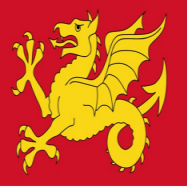Vote rigging on sdr.hu
Hi All,
What's happening on sdr.hu ?
The votes for a few sdr's suddenly seem to have gone crazy.
There are a few sdr's that haven't been on line for too long and they have very quickly risen to the top of the list with huge numbers of votes.
I could understand this if they had been publicised in some way, but they never seem to be that busy and the performance of some of them leaves a lot to be desired.
I suspect some 'bots' have been busy
Regards,
Martin - G8JNJ

Comments
I agree with your analysis that it would be useful to sort receivers by geography. However if you're aware of the existing maps, aren't you satisfied with the way they "sort" and present the receivers by geography? That would sound just obvious to me so I'm a bit confused o_O Maybe I'm missing something obvious from the point of view of some use cases. Are there reasons why you would prefer a linear listing sorted by geographic groups, over a map presentation? Something missing in them?
Regards,
Mauritz / SM2BYC
Regards
Mauritz / SM2BYC
The KIWISDR WSPR extension is also a good starting point.
Regards
Mauritz / SM2BYC
I still think that WSPR based ranking is the best alternative.
Perhaps the easiest way would be to have the central server (e.g. rx.linkfanel.net) connect to one RX at a time and run WSPR for some time. The results could then be extracted either directly from the RX or from WSPRNET.ORG. The server could then move on to the next RX. This way no action would be needed from the Rx owner and no modification would be required to the Kiwi SDR software.
Regards
Mauritz / SM2BYC
rx.linkfanel.net) connect to one RX at a time and run WSPR for some
time. The results could then be extracted either directly from the RX or
from WSPRNET.ORG. The server could then move on to the next RX. This
way no action would be needed from the Rx owner and no modification
would be required to the Kiwi SDR software.
I don't think that would be easiest. It's already troublesome enough to properly manage automatic probing of each receiver's status, and that's just one simple HTTP query. Running a full WSPR session for some time would be much worse in difficulty and complexity. Running probes from a central server to each receiver one by one doesn't scale up when the size of the network increases. If WSPR could be run as a background process when slots are available like some people have expressed they wished, and the results reported by the receiver itself along with other health information like current user count, I do think that would be valuable; but implementing this might be a long way from here.
> Using receiver usage as a basis for rating will give some information on
their performance. The drawback I see is that the results will easily
be offset by user and/or administrator behaviour. I could connect to all
4 channels on my Kiwi SDR and leave them running for 24/7. That would
guarantee me top ranking without even having to connect an antenna to
the RX.
It could give some insights that would be right in some cases, but even without malicious manipulation, I'm quite skeptical it would be reliable. Some people do some day-long monitoring on some receivers, sometimes you can see the user has been connected and sitting on some obscure frequency for several days... Some people also like to use several slots to run WSPR, and although that can be useful, that's not a relevant indicator of popularity. And again, popularity is not quality; there's a reason why we have the expression "degenerate into a popularity contest"
According to the changelog, the v1.121 icons are set from a central kiwisdr.com database, that I can only assume too is populated by hand by John. That's one option, I know first-hand it still demands significant manual review. But regardless of where the data comes from, I like this kind of vector to display relevant quality information in the sdr.hu listing, without requiring work from Andr?s.
This afternoon I've written a quick proof of concept for my signal-to-noise idea. It's on test at rx.linkfanel.net Darker, greyer markers are receivers with a lower score; and brighter, redder ones have a better score. Bear in mind that the color scheme and score formula still need to be tweaked, and it was run manually once at one given time of the day, so it would still be important to integrate and average successive scoring samples over a period at least longer than a day-night cycle. For the details, the ratio is calculated from a few seconds of fully-zoomed-out waterfall data, using the median signal power as background noise value, and the 5% of most powerful signals across the whole spectrum as a signal value. It's also not (yet) a multi-band approach, so at the moment scores can be skewed by things like a very strong MW band.
Just like I said about WSPR, I hope that this could be done as a periodic background service by the KiwiSDR board itself, instead of the small script I ran by hand.
broadcast bands in order to be able to run the rest of the frequencies
at a higher level.
Don't worry, Martin, the current crude score samples rank your receiver 13th out of 134 rated receivers